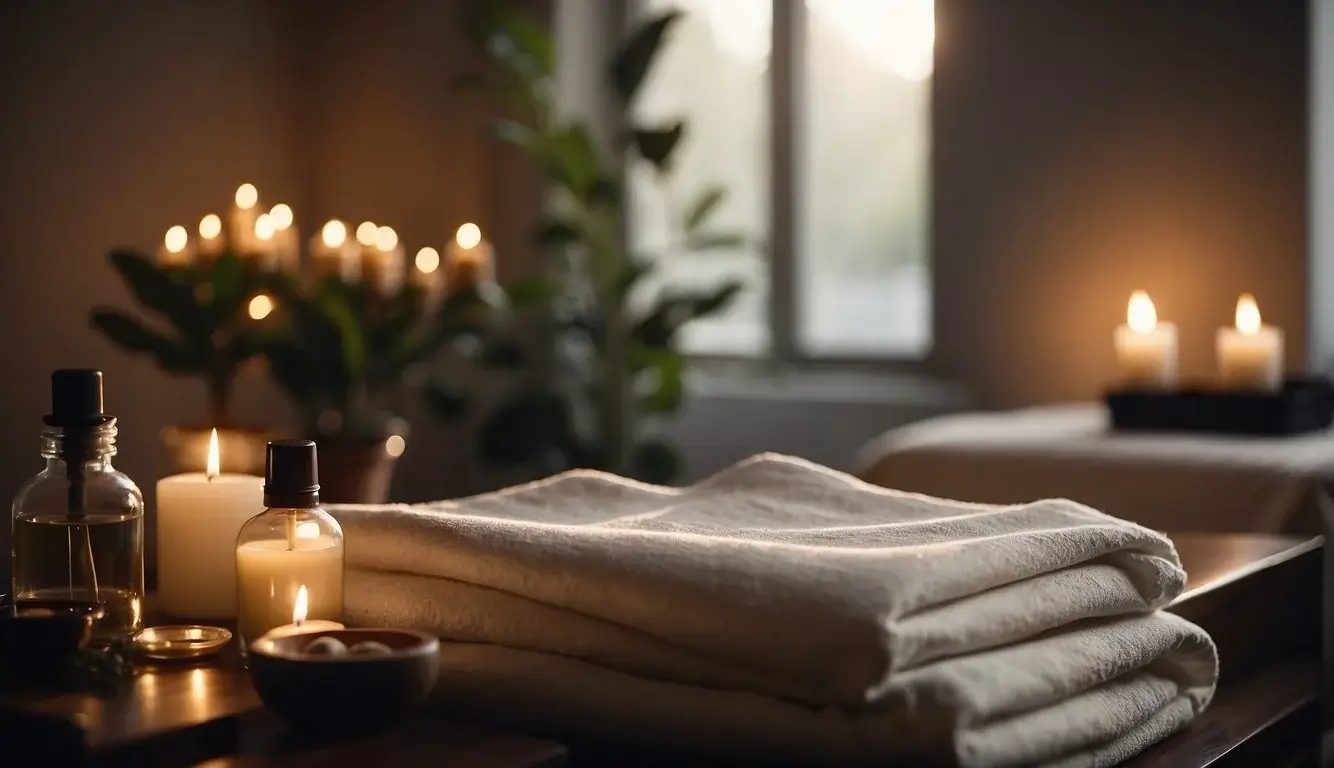Embarking on a journey into the realm of Asian massages has been a profoundly enlightening experience for me. Having invested many hours in studying and observing, I have come to understand the rich traditions and thoughtful customs that define this type of massage. The protocols adhered to in Asian massages go beyond simple rules; they offer a path to genuine tranquility and a deeper respect for cultural heritage.
From the initial greetings to the final moments of tranquility, each step is imbued with meaning and respect for the art. This guide aims to share the essence of these practices, ensuring that every visit to an Asian spa is rejuvenating and a respectful homage to an age-old tradition of healing.
Key Takeaways
- Acknowledging cultural practices enhances the massage experience.
- Clear communication with the practitioner ensures massage effectiveness.
- Observing proper etiquette shows respect and extends the massage benefits.
Understanding Asian Massage Culture

I’ve always been fascinated by the rich tapestry of Asian massage culture, which encompasses an array of practices reflecting deep historical roots and diverse therapeutic techniques. Here, I’ll guide you through the significance of its history and the variety you might encounter.
Historical Context of Massage
The tradition of massage in Asia is steeped in a history that spans across several countries, with each region contributing to the tapestry of massage practices. For instance, in Japan, the practice of Shiatsu—meaning “finger pressure”—has been honed over centuries, with its origins tied to traditional Chinese medicine and the guiding principles of energy pathways known as meridians. Likewise, Ayurveda, an ancient healing system from India, incorporates massage as a key aspect of holistic healing, aiming to balance the body’s doshas, or energies, for optimal health.
Types of Asian Massages
I find the variety of massages originating from Asia fascinating due to their unique qualities and benefits. For example:
- Thai Massage: This is a vigorous form of massage that combines stretching, kneading, and pressure points. It’s often described as having someone “do yoga to you” and is rooted in energy lines running through the body.
- Aromatherapy Massage: Utilizing essential oils extracted from plants, an aromatherapy massage in an Asian context is infused with scents that aim to enhance emotional and physical well-being. Each oil has its properties, like lavender for relaxation or peppermint for stimulating the senses.
Each of these massages, whether the Shiatsu of Japan or the Ayurvedic massages of India, has a history and a specific set of techniques designed to heal not just the body but also the mind and spirit.
Before the Massage

When preparing for a restful spa experience, it’s crucial to handle the advanced work thoughtfully and take care of my needs. This involves both booking the appointment carefully and ensuring I am mentally and physically prepped.
Booking an Appointment
I make it a point to book my appointment over the phone or online, choosing a time that allows for a stress-free arrival without rushing. I inform the spa of any preferences, such as therapist gender, and ask about any protocols to be mindful of. It’s key to be clear about the services I expect, as treatments can range from hydrotherapy pools to various massage styles, such as a bamboo massage that can help with circulation.
- Phone: Always confirm my booking a day in advance.
- Preferences: Likewise, I let them know of any special requirements.
Preparing Mentally and Physically
I start my preparation by planning to arrive a bit earlier than my appointment time for extra unwinding. A good shower is a must—not just for hygiene but to begin the relaxation process. Mentally, I make an effort to clear my thoughts and focus on the experience ahead.
- Shower: Ensuring cleanliness and freshness pre-massage.
- Relaxation: Sometimes I practice a bit of deep breathing or meditation before leaving the house.
Remembering these steps helps me maximize my spa experience, making it rejuvenating and serene.
Massage Etiquette

I always approach a massage with a clear understanding of the etiquette involved. By maintaining respectful behavior and open communication, I ensure a comfortable experience for both myself and the practitioner.
Communication with the Practitioner
When I enter the massage room, I immediately communicate any preferences or areas of discomfort. I politely inform the practitioner if I have specific needs, like more focus on my shoulders or a gentler touch if I’m sensitive in certain areas. This dialogue helps tailor the massage to my needs and improves the session.
Appropriate Behavior During the Massage
During the massage, I understand the importance of following certain behavioral guidelines. If an erection occurs, which can happen involuntarily, I remain calm; it’s a natural response and most therapists are accustomed to it, and it is simply ignored. If I feel like I might fall asleep, which is not uncommon due to the relaxing nature of a massage, I allow myself to rest, knowing it’s a compliment to the therapist’s skills. When it comes to undressing, I do so to my level of comfort, knowing that I will always be professionally draped.
As for tipping etiquette, while it varies by culture, I’ve learned that in places like Japan, a tip is not expected and could even be seen as rude, whereas in other countries, it’s a way to show appreciation for the service provided. I always check local customs before my visit to act accordingly.
After the Massage

After enjoying the relaxation and benefits of a massage, it’s important to follow a few simple courtesies that ensure my experience ends as pleasantly as it started.
Post-Massage Etiquette
Once my massage is complete, I like to take a moment to gather my belongings slowly. If a sauna is available, and time permits, I might spend a few minutes in there to prolong the relaxation benefits. Hydrating post-massage is vital, as this helps flush out any toxins my muscles released during the session.
Feedback and Tipping
Providing feedback is always appreciated. I politely convey my thoughts to the therapist, especially if certain techniques were particularly effective. Tipping is customary and reflects my satisfaction with the service. The consensus is that 15-20% of the massage cost is standard, but the amount may vary based on my personal discretion and the quality of service received. Here’s a simple breakdown:
| Service Quality | Tip Percentage |
|---|---|
| Exceptional | 20% or more |
| Good | 15-20% |
| Satisfactory | 15% |
Encompassing these simple practices after my massage ensures I leave the spa feeling content and demonstrates respect for the service provided.
Extending the Benefits of Your Massage

Maximizing the effects of my massage involves active participation in post-session care and planning ahead. By focusing on self-care and considering the timing of my next visit, I can enjoy a prolonged boost to my wellbeing.
Self-Care Post-Massage
After my massage session, I prioritize self-care to extend the benefits. I make sure to hydrate adequately since massages release toxins from my muscles, and drinking water helps to flush these out. It’s not just about staying hydrated; I also engage in gentle stretching exercises to maintain the looseness and flexibility gained from the massage. Additionally, rest is crucial—I ensure I get a good night’s sleep to allow my body to heal holistically from the therapy it received.
Planning Your Next Visit
Scheduling my next visit is part of my holistic approach to health. I often inquire about purchasing a gift certificate for future sessions, sometimes spas offer them at a discount. It’s an economical choice and a commitment to my spa experience as part of my regular self-care routine. I consider the benefits I have received and work with my therapist to establish a timeline that suits my health goals, whether it’s to relieve stress, manage pain, or maintain a sense of wellbeing.
FAQ – Asian Massage Etiquette
Is it necessary to make an appointment for an Asian massage?
While walk-ins are often accepted, making an appointment is recommended to ensure availability, especially at more reputable establishments or for specialized treatments. It also shows respect for the therapist’s schedule.
What should I do upon arrival at the massage parlor or spa?
Arrive a few minutes early to complete any necessary paperwork, use the restroom, and start to relax. If it’s your first visit, there might be a brief health questionnaire to tailor the massage to your needs.
How should I communicate my preferences or concerns to the massage therapist?
Before the massage begins, clearly communicate any specific areas of tension, injuries, or conditions that may affect your massage. During the massage, feel free to speak up about the pressure level or if you’re uncomfortable in any way.
If you enjoyed reading about Asian Massage Etiquette, check out our other articles:
- Bowling Etiquette 2024: Tips for Polite Play on the Lanes
- Surf Etiquette 2024: Key Rules for Sharing the Waves
- Tennis Etiquette 2024: Key Rules and Polite Play for Beginners
- Laundromat Etiquette 2024: Tips for a Harmonious Wash Day
Feel free to also check out our other Articles from the category “Etiquette & Manners“ and don’t forget to follow us on Pinterest.

